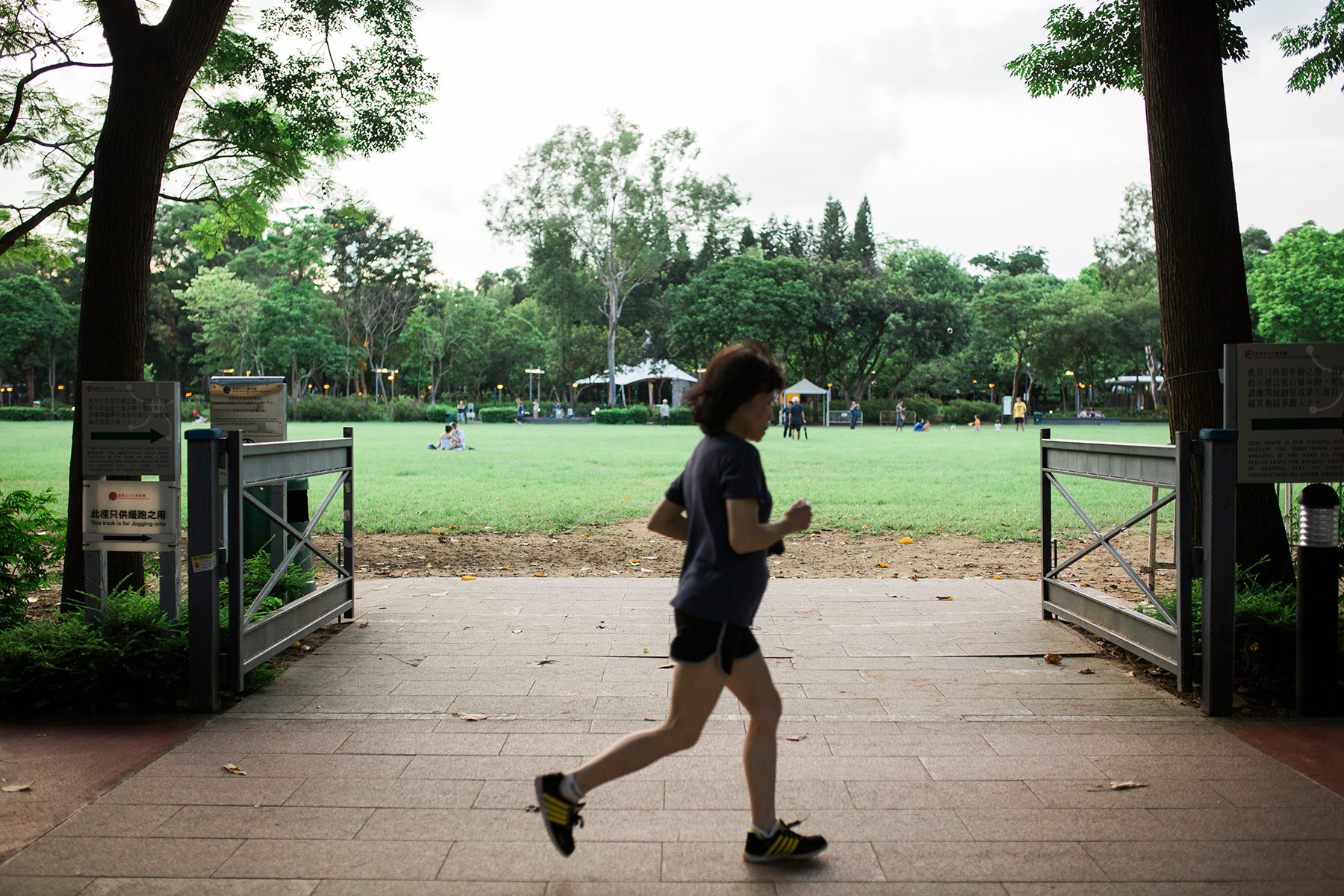Causeway Bay:
A Progressive District
Causeway Bay has always been at the forefront of trends and developments. The neighbourhood is home to some of the most progressive brands in the world as well as some of the most advanced buildings in the city.
Causeway Bay is a no-fly zone for drones, but if you were to traverse above its densely-packed buildings, you’d see a constant flow of people through a tight web of streets lined by brightly lit shops and market stalls, all of it punctuated by landmarks like Hysan Place and Sogo.
“It’s a very intense environment – and the intensity comes from the density,” says architect Florence Chan. “You can go up 30 storeys to have dinner, or you can go to the street, where there’s always something new happening. It makes it a very exciting place.”
That excitement has drawn many businesses to the neighbourhood. When leading drone company DJI decided to open one of its first flagship stores in Hong Kong, it chose Causeway Bay.
“Whether you are a local or a traveller visiting Hong Kong, Causeway Bay is always one of the stops and a place where you can experience it all,” says Kevin On, DJI’s Global Marketing and Communication Director. “Whether it’s for food, shopping or to pick up the newest gadget, you can find almost everything there.”
DJI rented a two-storey space in a new building on Jaffe Road for its flagship. “There are big glass windows and pedestrians can see drones flying inside even from outside the store,” says On. “The purpose of the flagship store is really about the experience. You can go inside and see how a drone works, learn from experts, and we have workshops where people can learn about the products, best practices, and local regulations, before they take their drone to the air.”
Causeway Bay is a no-fly zone for drones, but if you were to traverse above its densely-packed buildings, you’d see a constant flow of people through a tight web of streets lined by brightly lit shops and market stalls, all of it punctuated by landmarks like Hysan Place and Sogo.
“It’s a very intense environment – and the intensity comes from the density,” says architect Florence Chan. “You can go up 30 storeys to have dinner, or you can go to the street, where there’s always something new happening. It makes it a very exciting place.”
That excitement has drawn many businesses to the neighbourhood. When leading drone company DJI decided to open one of its first flagship stores in Hong Kong, it chose Causeway Bay. “Whether you are a local or a traveller visiting Hong Kong, Causeway Bay is always one of the stops and a place where you can experience it all,” says Kevin On, DJI’s Global Marketing and Communication Director. “Whether it’s for food, shopping or to pick up the newest gadget, you can find almost everything there.”
DJI rented a two-storey space in a new building on Jaffe Road for its flagship. “There are big glass windows and pedestrians can see drones flying inside even from outside the store,” says On. “The purpose of the flagship store is really about the experience. You can go inside and see how a drone works, learn from experts, and we have workshops where people can learn about the products, best practices, and local regulations, before they take their drone to the air.”
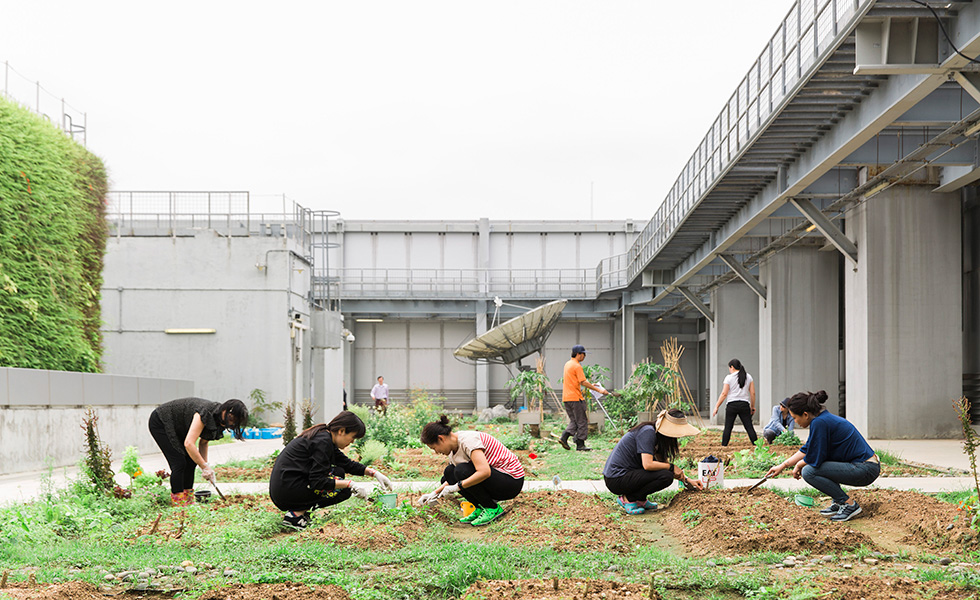
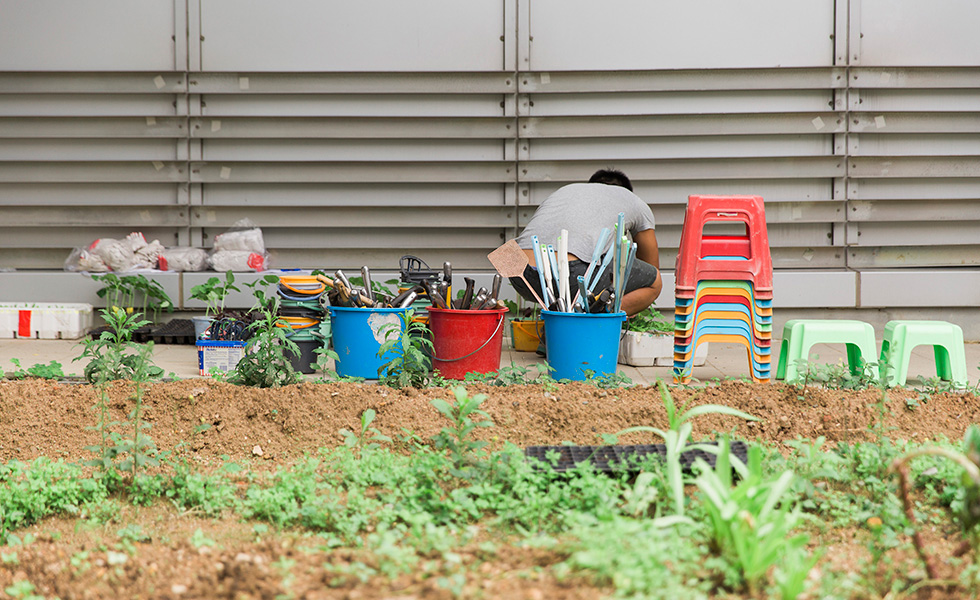
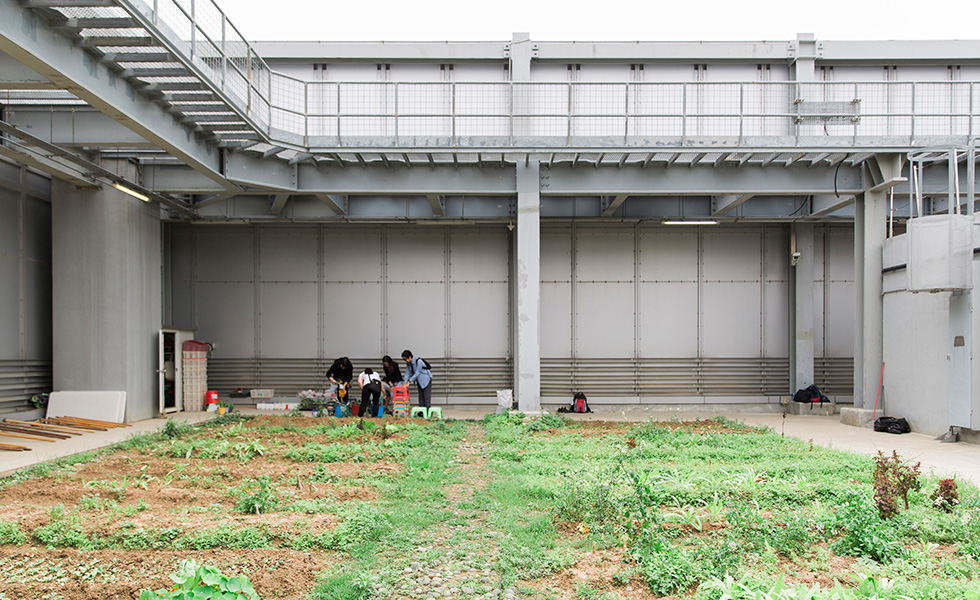
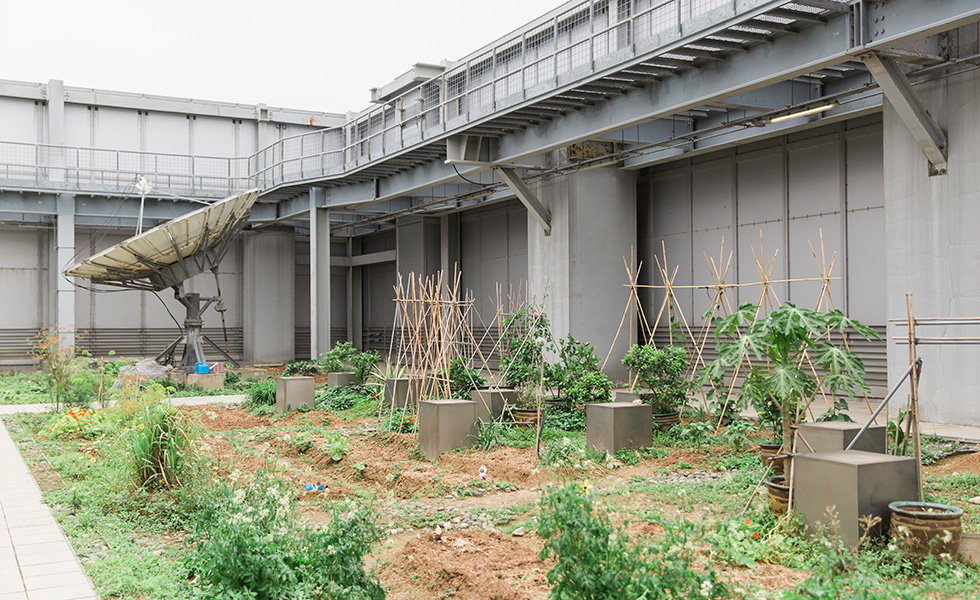
Kevin On, DJI director of communications

While a drone over Causeway Bay is out of bounds, there are still plenty of opportunities to examine the neighbourhood from above. Looking out from the fourth floor of Hysan Place is like gazing out over a valley. In the distance are the peaks of apartment blocks and office towers, but in the foreground is a low expanse of 1950s-era walkup buildings, each festooned by air conditioners, drying laundry and colourful shop signs.
This particular bit of urban topography is no accident. When the Lee family razed Jardine Hill and sold it for development in the 1950s, they imposed a restrictive covenant that limited building heights. When the old Mitsukoshi department store was pulled down for 40-storey Hysan Place, the architects created an aerial garden where people could look out on this urban valley: breathing room in more ways than one.
“It’s a little urban oasis,” says Florence Chan, the architect who is a director at the Hong Kong office of KPF, the global architecture firm that designed Hysan Place.
Causeway Bay has always been a forward-thinking part of Hong Kong. From its early days as one of the city’s first industrial areas, it evolved into a popular district for shopping and recreation. The tradition continues in a new generation of development that is infusing the neighbourhood with sustainable, high-quality design – which is in turn drawing the attention of global businesses.
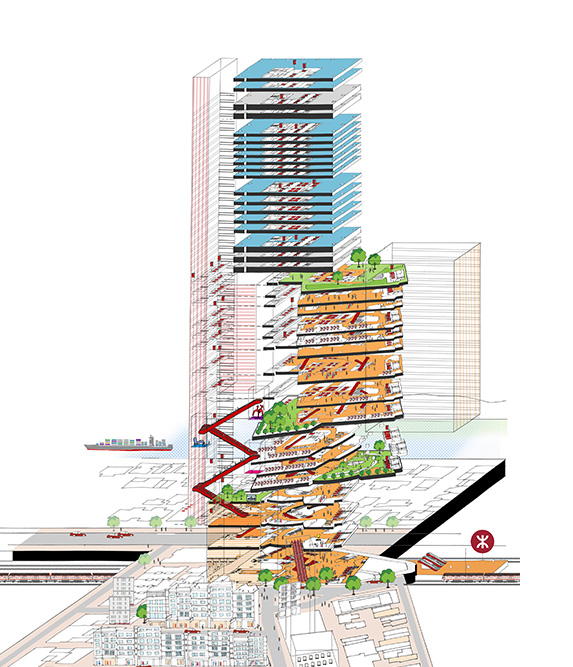
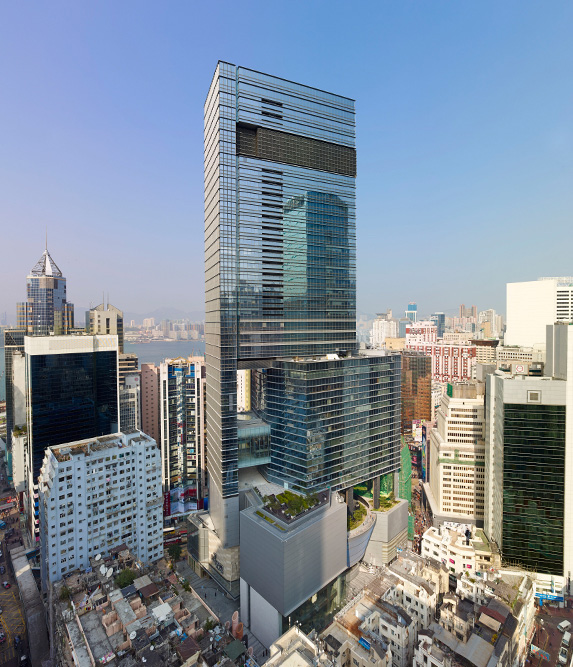
(Illustration and image: KPF)
Florence Chan, architect and director KPF Hong Kong
Hysan Place kicked off this new step in Causeway Bay’s evolution. The project was originally launched in 2004 when the developer, Hysan Properties, launched a design competition. It called for a mixed-use retail and office complex that would tower above Hennessy Road. KPF won the bid, but soon after, Hysan decided to take the project in a new, more progressive direction. “It was a complete redesign,” says Chan. “There was a different emphasis – this time on sustainable design.”
The goal was to create a building that could last and sustain changes. The new design had to provide 710,000 square feet of retail and offices, but it also needed to ensure that the new tower wouldn’t need to be torn down or extensively overhauled if market, environmental or social conditions change in the future. “The original building was not very old, but it was torn down because it couldn’t adapt to changing market demands,” she added. “We wanted to make sure the new building could respond to the challenges of the next 50 years because tearing down and rebuilding is not a very sustainable act.”
The result is a 208m skyscraper that is actually three buildings in one: an office tower, a shopping mall, and a block of 11 floors that can be used for both retail or offices. In the end, a full 17 storeys were used for shopping, but if Hong Kong’s retail market ever softens, the building can be modified without the need for a resource-intensive structural overhaul.
Florence Chan
The site’s compact area and unusual trapezoidal shape meant KPF’s design doesn’t have a conventional front façade. Whether it faces Hennessy Road, Kai Chiu Road or Lee Garden Road, the building is meant to draw in passersby. “There was always a goal to allow this project to be very porous on the ground floor, to allow pedestrians to pass through our site,” says Chan.
Once inside, a mix of lifts, escalators and “expresscalators” help people move through the vertical space in different ways. “It’s not an easy task to move people through 17 floors of retail and still have them feel excited,” says Chan. “People can go up one way and come back down another.”
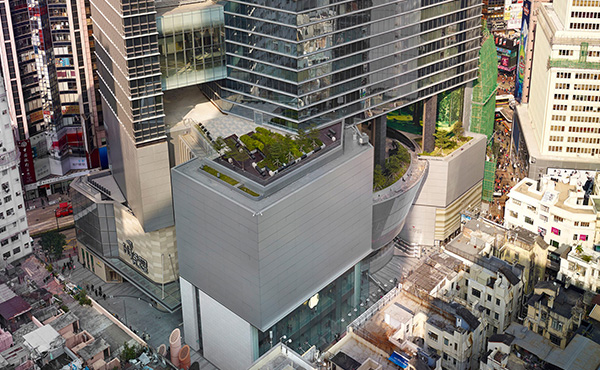
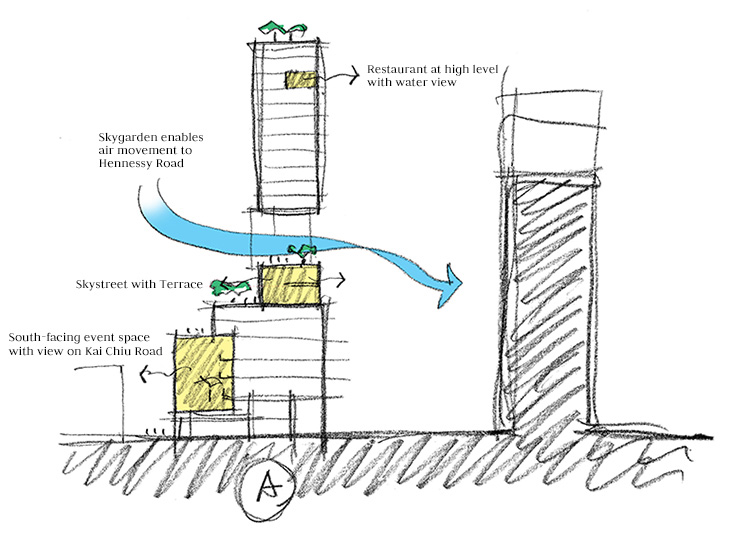
(Image: Grischa Rueschendorf
Illustration: KPF)
Packing all of these different forms of mobility into one building was a bit of a juggling act. To save precious ground-floor space on a lift lobby for the office tower, double-decker lifts take office workers up to a large atrium on the 9th and 10th floors — Chan calls it a “sky street” — where they can continue upwards into the upper part of the tower.
The building’s three-in-one form, which stacks volumes on top of one another like a game of Jenga, allowed the architect to create a series of outdoor spaces at various levels. All told, there are four different rooftops, including the public garden on the fourth floor, an al fresco dining area on the seventh, urban wetlands managed by Hysan with input from City University on the 16th floor and an urban farm on the rooftop.
“If you look around Causeway Bay there aren’t really any open space unless you go to Victoria Park,” says Chan. Hysan Place’s outdoor spaces provide space for the public to relax, but they also encourage air flow through the building, which helps alleviate the “wall effect” that can make Hong Kong’s central neighbourhood stuffy and unbearably hot in the summer. “The idea of urban ventilation is not new, but this is one of a few projects that really puts it into action,” says Chan. What’s most remarkable is that natural ventilation finds its way inside the office tower, too. Operable vents allow tenants to bring in fresh air instead of having year-round air conditioning.

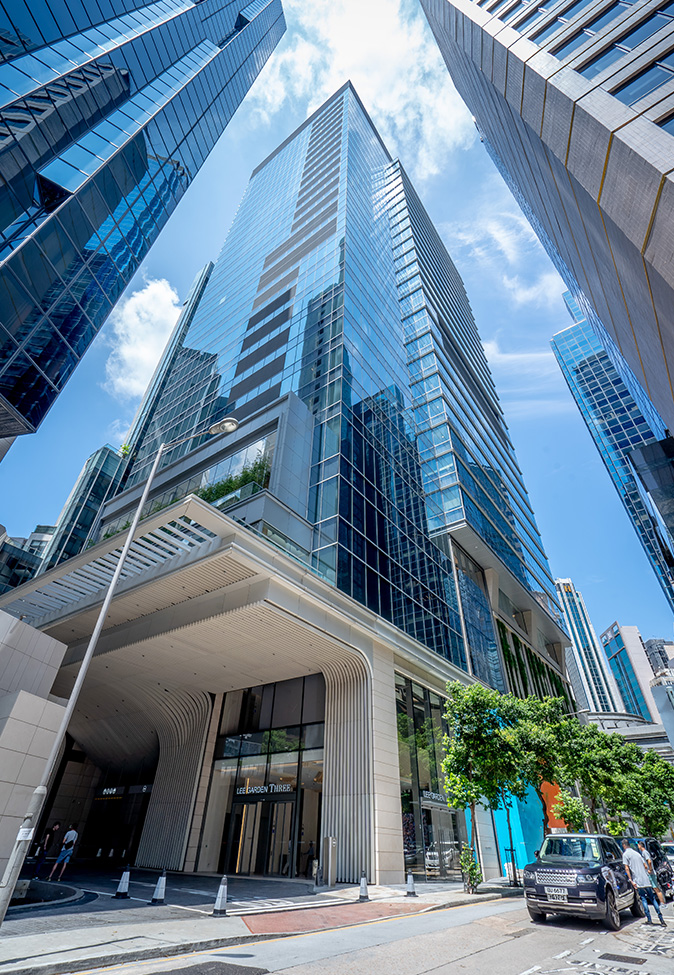
Konnie Yu, Hysan’s corporate
sustainability manager
Hysan Place isn’t the only building in Causeway Bay with sustainable features. There’s a green roof at Lee Garden One and Lee Garden Three features green roofs, green walls and even a butterfly garden – an effort to accommodate some of the 235 recorded species of butterflies that live in Hong Kong, one of the most diverse arrays of any city in the world. Hysan Place and Lee Garden Three both qualify as environmentally-friendly by the US Green Building Council. Hysan Place is certified LEED Platinum – the highest level – and Lee Garden Three is pre-certified for LEED Gold. Over 45 percent of Hysan Place’s office space has been awarded LEED Commercial Interiors Platinum certification, which has drawn a number of high-profile tenants like KPMG, the global accounting firm.
“Many prospective tenants ask about this kind of certification,” says Konnie Yu, Hysan’s corporate sustainability manager. The certification was earned through a host of features. “In Hysan Place, we treat our greywater from office floors through the wetlands, and reuse it for irrigation and floor washing,” she says. The green roofs reduce building temperatures, cutting energy consumed by air conditioning, and help avoid the urban heat island effect. New filtered water dispensing machines installed in Hysan Place and Lee Garden Two by Urban Spring, a local NGO, encourage shoppers to bring their own water bottles and use fewer disposable plastic bottles. “We have saved over 200,000 plastic single-use bottles to date,” says Yu – an impressive number determined by the volume of water dispensed from the machine.
There’s a social aspect to the green efforts, too. Workshops are held in the rooftop farm, and tours take visitors through the wetlands and Hysan tries to raise environmental awareness through events like Greenfest: Rethink Our Food, which will include film screenings, a symposium on urban agriculture, a series of workshops, demonstrations and talks.
BOWINGTON ROAD MARKET
One of Hong Kong’s busiest markets that offers the freshest ingredients and contains a popular and always bustling Cooked Food Centre.
Wan Chai Fire Station
Oldest fire station still standing in Hong Kong. Its maroon facade and retro-style balconies distinguish it from other fire stations in the city, which have followed a standard design since 1958.
LEE THEATRE
First opened in 1927, Lee Theatre hosted film screenings, Chinese opera and world-class cultural performances, ranging from Liza Wang’s concerts to the Miss Universe pageant in 1976. It is now a bustling shopping plaza that houses international lifestyle labels, fashion flagship stores and restaurants.
HYSAN PLACE
Houses office and retail with an urban farm for the green-fingered. Designed with a wealth of green building features that conform to the highest international standards of sustainability.
OLD SAN YANG
The Causeway Bay institution is a go-to for Shanghainese delicacies ranging from hairy crabs from Jiangsu, Jinhua ham, various condiments and pickles, to dried seafood and glutinous rice dumplings.
JARDINE’S BAZAAR
A tightly-packed local market with stalls spilling with affordable clothing, accessories and knick-knacks.
LEE GARDEN THREE
Lee Garden Three is Hysan’s brand new development with LEED Gold Awarded A-Grade office. Focusing on work-life balance, the prime commercial building has a dining and retail podium, a Sky Garden and an indoor running track.
DANISH BAKERY
An old-fashioned bakery that serves its renowned pork chop bun, which they deep-fry the pork chops before slathering them in rich mayonnaise and tomato puree.
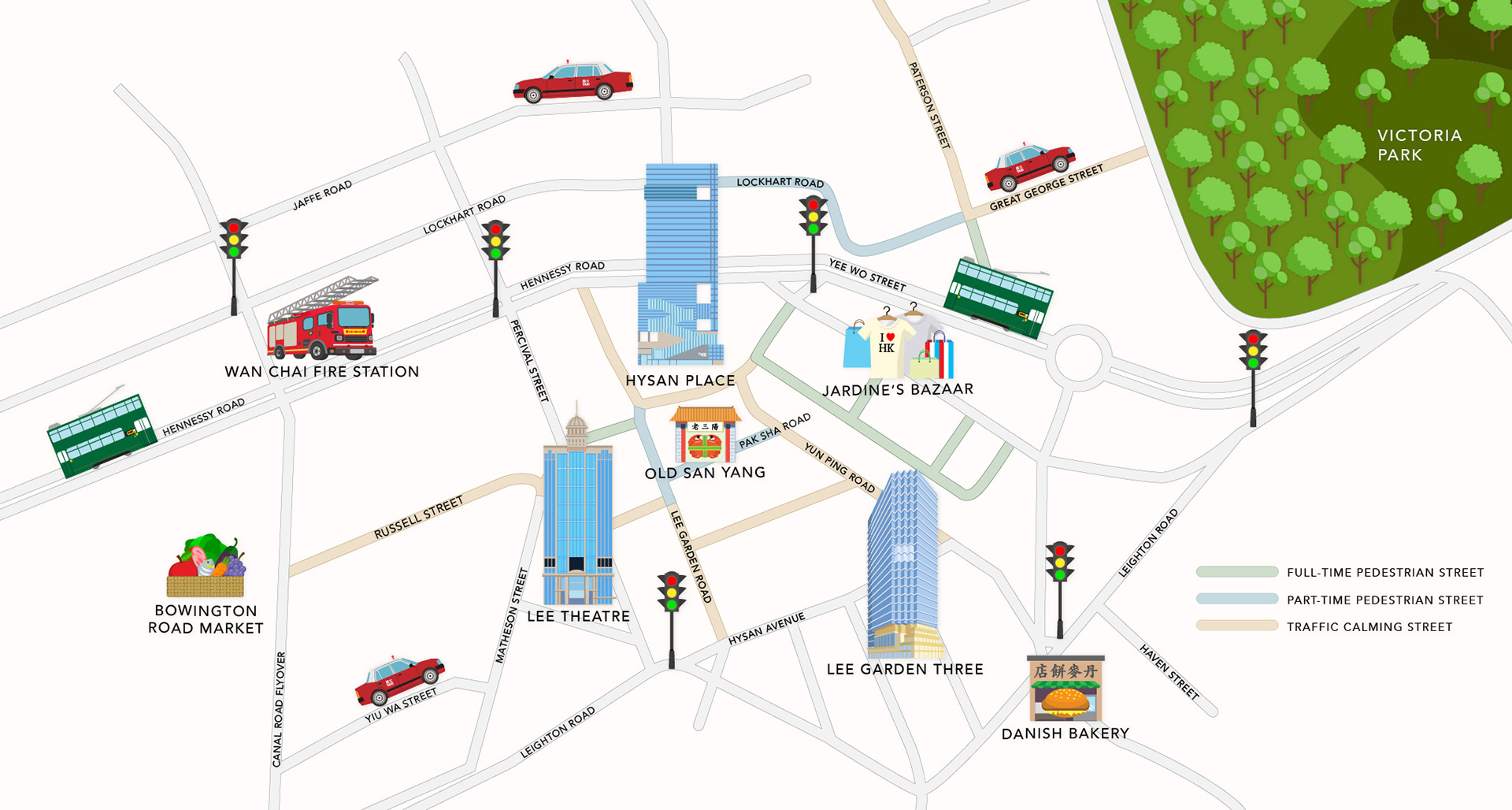
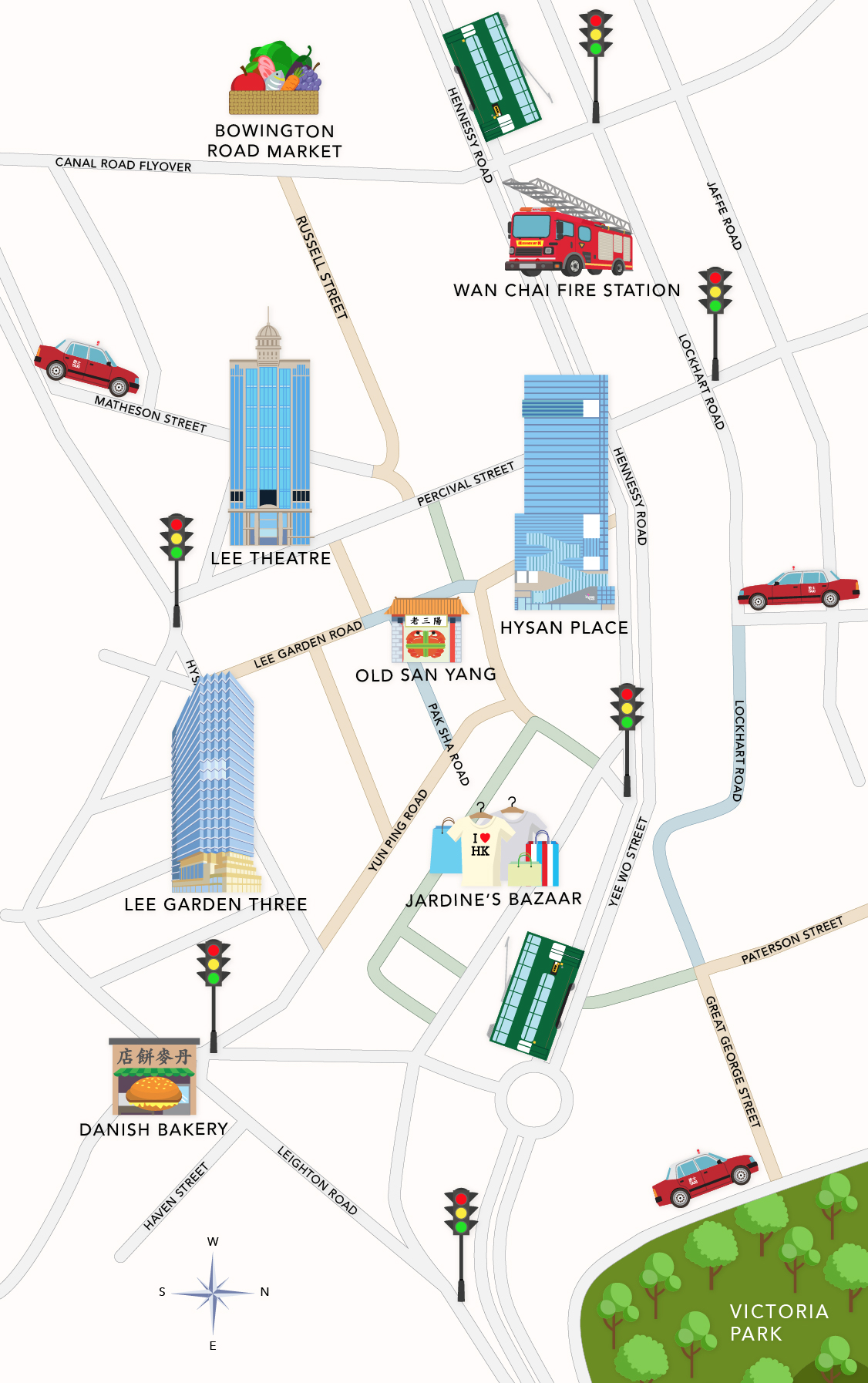
Peter Cookson Smith, Hong Kong urban planner
There’s still plenty of work to be done. Because of its high density, narrow streets and traffic congestion, Causeway Bay has some of the worst roadside air quality in Hong Kong. Yu says Lee Garden Three will attempt to deal with the situation by including a number of charging stations for electric vehicles. In addition, Hysan is coming up with long-term plans to divert traffic from street level to below ground, pending the government’s approval.
But the neighbourhood has good bones. A network of full- and part-time pedestrian streets already stretches through the area, making it one of the liveliest parts of an already lively city. “There’s very little open space but it’s quite walkable,” says Peter Cookson Smith, one of Hong Kong’s foremost urban planners. “There are a lot of older tenements that contrast with the new development. There’s a synergy between them. You can walk around and there’s a lot of energy.”
Cookson Smith praises the eclecticism of Causeway Bay’s built environment — a mix of busy thoroughfares and smaller back streets, with old and new buildings that sit side by side. He says that diversity fulfills one of the criteria for healthy cities laid out by urban theorist Jane Jacobs, who wrote that “cities need old buildings so badly it is probably impossible for vigorous streets and districts to grow without them.” Because Causeway Bay is packed with such a wide range of habitats, “change is not overwhelmingly of one kind,” says Cookson Smith. In other words, Causeway Bay is resilient. It will always be one of the most dynamic places in Hong Kong.
